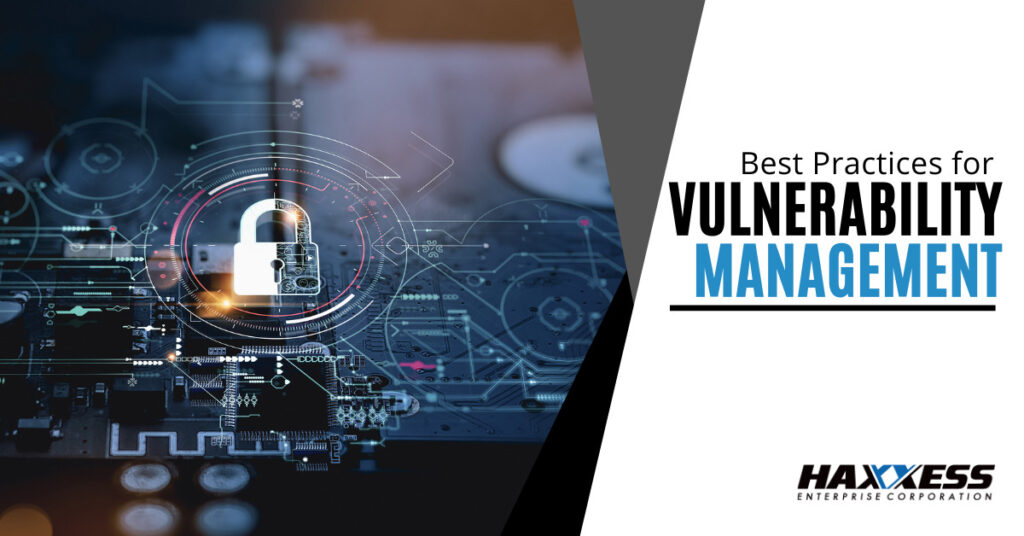
There are so many vulnerabilities hackers are targeting; as a result, vulnerability management is at the center of every business security program. Given the growing magnitude and sophistication of cyber crimes, having vulnerability management in your business is non-negotiable.
Reducing attacks your business could face requires a strong vulnerability management system. This helps combat the most stubborn and overwhelming cyber threats and attacks happening today.
According to a report, data collected from Jan-Mar 2022 showed 16% of small businesses, 25% of medium businesses, and 37% of big businesses reported being victims of cybersecurity attacks in 2021. As a result, vulnerability management is a critical element of a business security strategy. However, a vulnerability management solution can only reach its full potential when it follows various best practices and is built on a strong security foundation.
Continue reading to find out the best practices for vulnerability management that will help your business identify and remediate cyber threats, as well as get started on its vulnerability management program.
Broadly, vulnerability management is a set of procedures for identifying, analyzing, and managing vulnerabilities across a critical service’s operating environment. Simply put, it is the process of identifying the vulnerabilities present in an environment, evaluating and analyzing the risks associated with these vulnerabilities, and taking steps to mitigate those risks.
Keeping in mind the growing number of sophisticated cyber-attacks against businesses of all sizes and across industries, getting a solution that can detect and minimize the risk profile associated with cyber security and fortify the security posture is essential. It is a proactive approach to managing vulnerabilities in business security by early detection.
There are five primary steps in the vulnerability management life cycle for network security, including
This is the first stage of the vulnerability management life cycle. IT teams and analysts should narrow down and define the business’s assets and systems that will be accessed for vulnerabilities.
Since all assets have been identified, prioritizing them for investigation is essential. This is done in 3 steps
Note: This stage is essential in the vulnerability management lifecycle.
Once you have gathered the information in the prioritization stage, it is time to act. There are three options
Whatever option you choose, acting immediately is essential.
Reassessing is the next step, as this tells you if the actions you decided to take have been successful or not and if there are new vulnerabilities around the same asset.
This is the last stage of the lifecycle. Once all the four stages above have been completed successfully, improving the assets can defend against the vulnerabilities a cyber attacker could use to threaten your business.
As with anything that involves business, planning is essential. Planning prepares you for the vulnerability management journey ahead and following it up with the establishment of KPIs (Key Performance Indicators) guides your IT team and enables them to have realistic goals to work towards.
You can’t defend or protect what you don’t know about. As a result, asset discovery is one of the essential best practices for vulnerability management. Running a discovery scan to come up with a list of every device in your business will give you an accurate inventory of all the authorized and unauthorized devices and software installed. This enables you to know all the devices you have in your business and check for all possible vulnerabilities that attackers could exploit.
Note: It is recommended you run scheduled discovery scans to ensure all assets and devices are covered. Because leaving one out, such as new devices that come in after the discovery scan, could open up more vulnerabilities.
Scanning frequently can become cumbersome to carry out, which is why many businesses run vulnerability scans monthly to quarterly. However, getting a vulnerability scanning tool is essential to reduce the load of scanning. This enables you to set scheduled scanning times, and with the rate of cyber-attacks and vulnerability exposure, scanning should be done weekly or every two weeks.
Once you have discovered all the assets available within your environment, categorizing and prioritizing them based on their functions is essential. This ensures that the assets with critical vulnerabilities are prioritized and attended to first.
Once you have gathered all the necessary information, you can start scanning the systems to find the vulnerabilities. Conduct deep scanning of the assets to get a fine-grain vulnerability report. This scanning will take, so it is recommended that it be done outside of normal business hours.
After scanning, review and remediate all vulnerabilities. As a best practice, it is recommended you handle and remediate the vulnerabilities that are high-risk as they leave the most significant openings to your business.
There are many tools to scan vulnerabilities, including a console and scanning engines. Many low-end and free vulnerability management scanning tools simply scan a network or a system and provide remediation reports; they may also provide high false negatives and false positives. In contrast, high-end and feature-rich tools offer more accurate results, including penetration testing and patch management. Therefore, having the right tool adds to your scanning process.
Stay protected from vulnerabilities.Our team of professionals offers the best vulnerability management practices that help secure your business from cyber threats. If you don’t have a vulnerability management solution, send us a message or reach out to us at 705-222-8324.